Restoring Habitat for Minnesota's Golden-winged Warblers
During their May-to-August breeding season, Golden-winged Warblers are a fixture of Minnesota's deciduous forests. Then, they take flight and migrate south to their wintering grounds in Central and South America. And though sometimes I wish I could join them, the winter months when the ground is frozen are when I roll up my sleeves and put my nose to the grindstone to complete habitat restoration projects for this imperiled species.

Minnesota's northern forests are home to nearly 50 percent of the world's Golden-winged Warbler population during the summer breeding season. Photo by Greg Lavaty
Now, with spring's arrival, the ground has thawed and the Golden-winged Warblers are returning to their breeding grounds here in Minnesota. As the days lengthen and the birds take song, I find myself thinking back on my four years with ABC and marvel at the long and winding road that has resulted in the successful program we have today.
Four Years of Golden-winged Warbler Conservation
I started my incredible journey with American Bird Conservancy (ABC) in 2013 as its Minnesota Public Lands Coordinator stationed at the Tamarac National Wildlife Refuge near Detroit Lakes, MN. I have always been a Minnesota boy, but never lived quite this far north before. In this role, it became my job to utilize our grant from the Minnesota Outdoor Heritage Fund to create a habitat restoration and enhancement program in northern Minnesota's public forests for the Golden-winged Warbler and associated wildlife species.
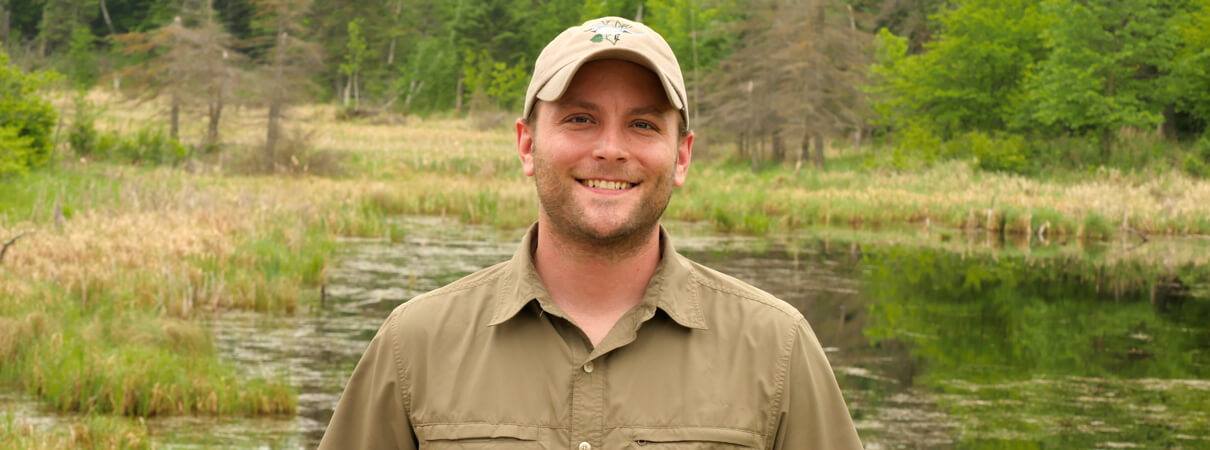
As ABC's Golden-winged Warbler Public Lands Coordinator, Peter Dieser identifies habitats for restoration and implements conservation projects on the ground. Photo by Aditi Desai
Golden-winged Warblers are striking neotropical migratory birds that nest on the ground in young forest patches or brushy wetland openings within mixed-age deciduous forests. These openings (often called early successional habitat) were historically created by natural disturbance such as localized wildfire and blowdowns that are not as prevalent today as they once were. Now, we mimic this natural disturbance through high-quality timber and brush management to open up breeding sites that still retain a patchy mix of residual woody vegetation.
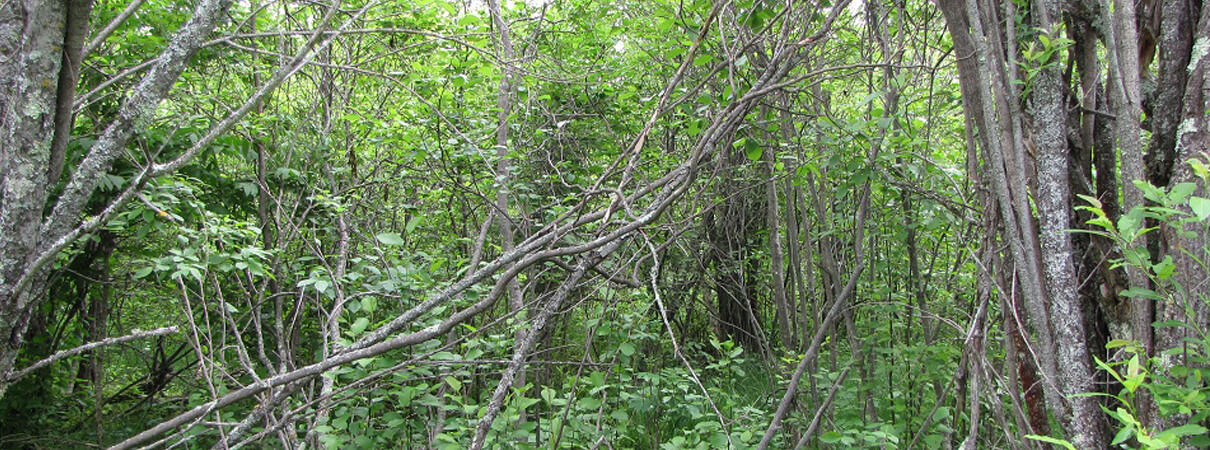
Dieser and partners restore and enhance overgrown habitats — such as the one shown here — to better suit Golden-winged Warblers' preference for a mix of open land and young forest. Photo by Peter Dieser
With a robust timber industry already established in northern Minnesota, I focus my efforts on designing and implementing treatments on overgrown brush sites. In the summer, I locate potential sites with partner agencies such as the Department of Natural Resources and the U.S. Fish and Wildlife Service that are located adjacent to deciduous forest and have a patchy mix of mature trees that can be retained for residual structure. Because these sites are often located on lowlands, the soil may be too wet for work to take place in the summer months. That's why most of my work is completed in the winter when the ground is frozen and the brush can be mowed without harming the ground.
Half the World's Golden-winged Warblers
Minnesota's northern forests are home to nearly 50 percent of the world's Golden-winged Warbler population during the summer breeding season (and almost all of its mosquitoes, or so it seems). That makes it perhaps the most important remaining ecological region for these birds. This, despite the fact that it only represents roughly 10 percent of the species' historical breeding range.
In fact, northern Minnesota is one of the few places where Golden-winged Warblers have retained a relatively stable population in most areas. This is important, especially considering that the species has endured a population decline of 60 to 70 percent across its entire range in the past 50 years and is being considered for listing as a federally endangered species.
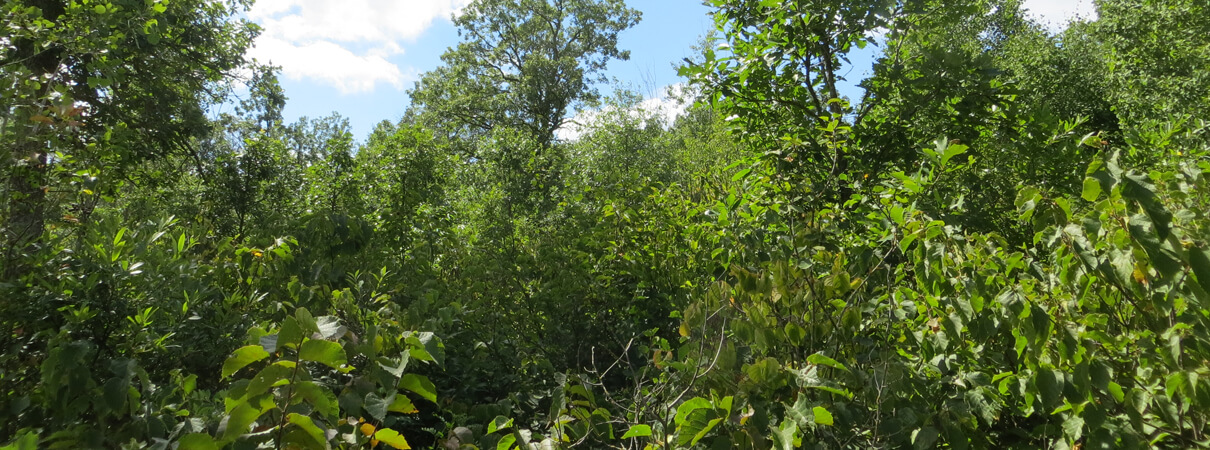
Before restoration, this parcel of land is too overgrown to be attractive to Golden-winged Warblers and other species that prefer to nest in early successional habitat. Photo by Peter Dieser
You might be wondering why we would put in all this effort if the Minnesota population is stable. And it's a reasonable question. If our aim is to maintain or increase the world's Golden-winged Warbler population, then Minnesota must be considered our population stronghold. If the population in Minnesota were to decline, the fate of the entire species would be at risk. Therefore, we plan to make sure that Minnesota's population remains robust or even increases in the next couple decades.
Thankfully, I am but one cog in a much larger effort by ABC. Working together, ABC and its partners have created Golden-winged Warbler habitat management programs on public and private lands throughout the species' breeding range in the Great Lakes and Appalachia. We have also worked to protect Golden-winged Warbler stopover sites and wintering grounds in Central and South America (though they haven't sent me down to view them yet).
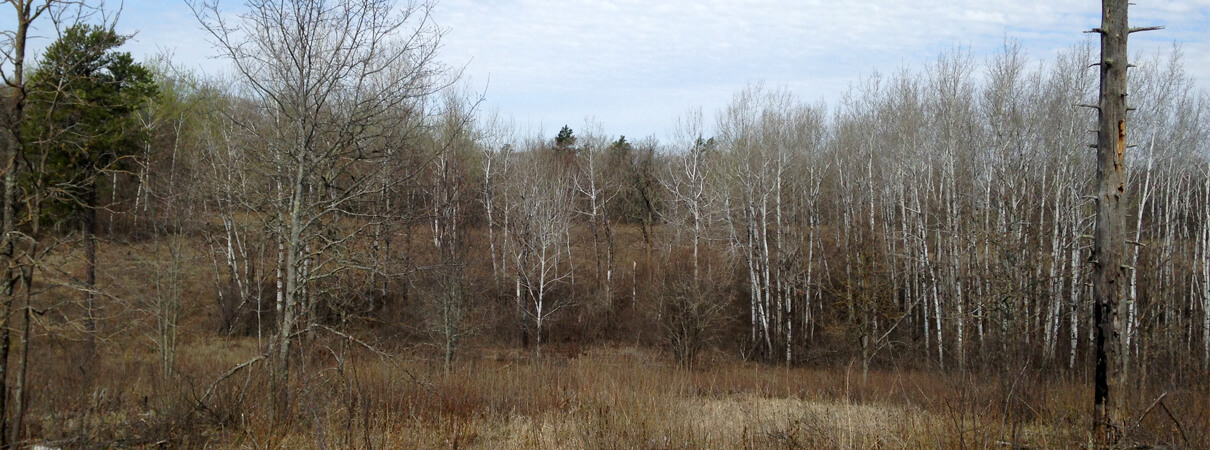
This early-spring photograph shows a parcel of land after Dieser and partners have completed restoration work — a process they call "treatment" — to open up the habitat and make it more appealing to Golden-winged Warblers. Photo by Peter Dieser
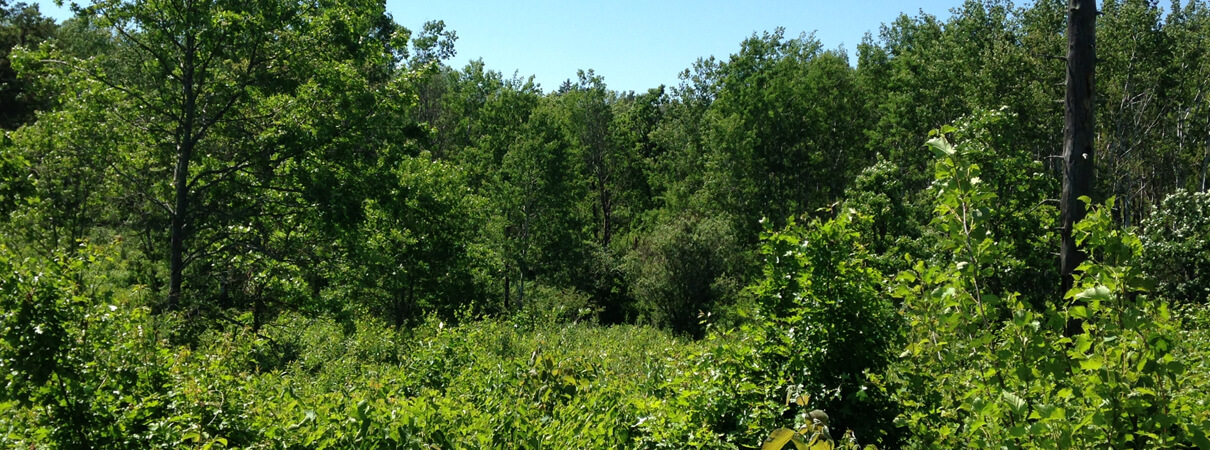
By summer, the landscape in this post-treatment habitat has filled in. The mix of trees and open land is attractive to nesting Golden-winged Warblers, as well as many other species. Photo by Peter Dieser
When I joined ABC in 2013, I didn't yet know the scope and depth of the work ahead of me, but I did know the ecological and biological significance of the habitat I would help create. And so I dove into the work, fighting the summer's ticks and mosquito swarms, as well as the winter's frigid temperatures, to forge partnerships and save warblers. The task of building a Golden-winged Warbler habitat program was a journey that would find me traversing northern Minnesota many times over, first as a prospective partner visiting various public lands agencies to showcase the work we could complete together, and later, as a project manager implementing projects with those agency partners.
To date, ABC's Minnesota Public Lands Program has been a wonderful success story. In just four years, we have completed projects with ten Minnesota Department of Natural Resources Area Wildlife Offices, six Minnesota County Land Departments, two U.S. Fish and Wildlife Service National Wildlife Refuges, the Chippewa National Forest, and the Red Lake Band of Chippewa Reservation. All told, we have successfully completed Golden-winged Warbler habitat restoration projects in 12 Minnesota counties totaling 2,655 acres.
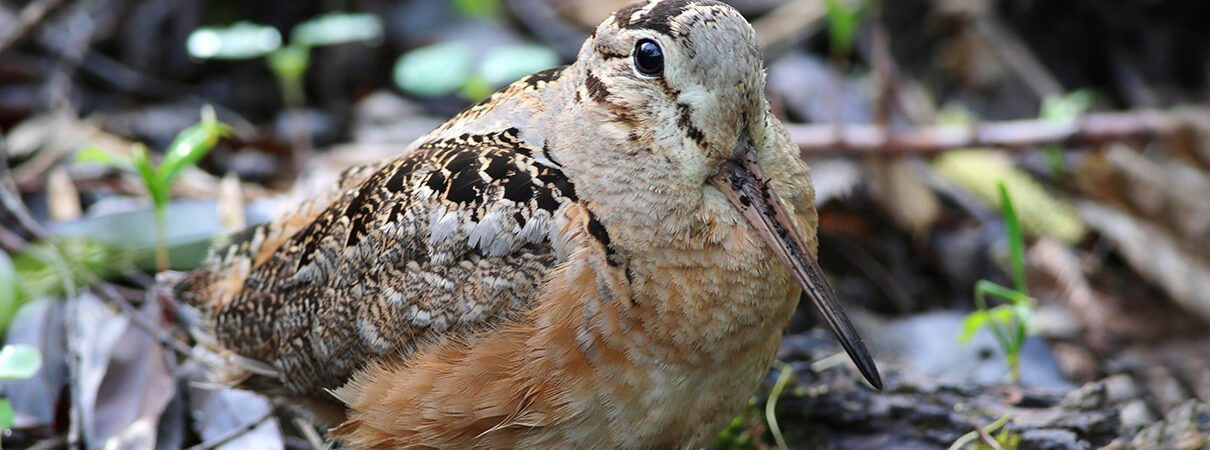
Many species of birds and other animals also prefer the patchy mix of open space and young forest that Dieser and others are implementing for Golden-winged Warblers. In this way, Dieser's work benefits many other species. Photo by Mike Parr
Now another winter project season has drawn to a close and the warblers have returned. Though I'll steal a few moments here and there to look in on them, the search for new project sites has already begun. In the immortal words of Robert Frost, “The woods are lovely, dark and deep, but I have promises to keep, And miles to go before I sleep, And miles to go before I sleep.”


















































